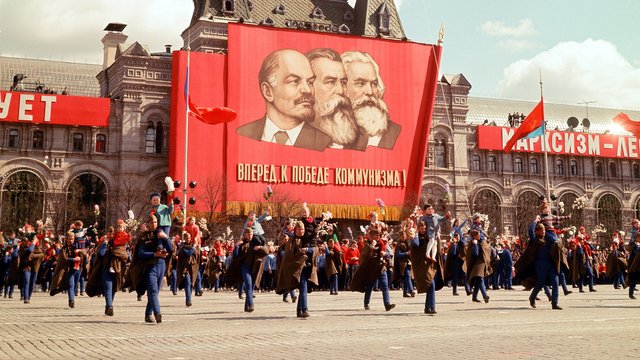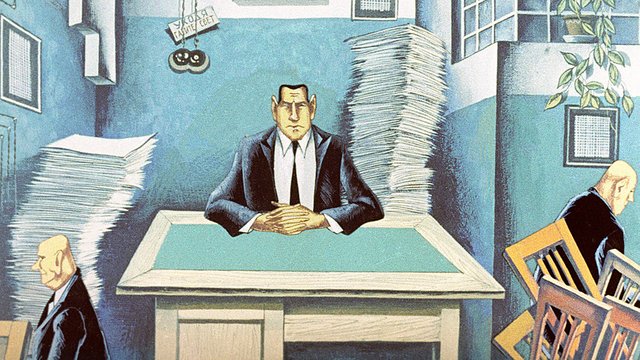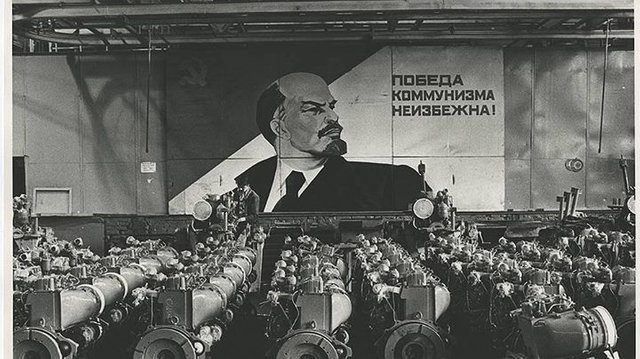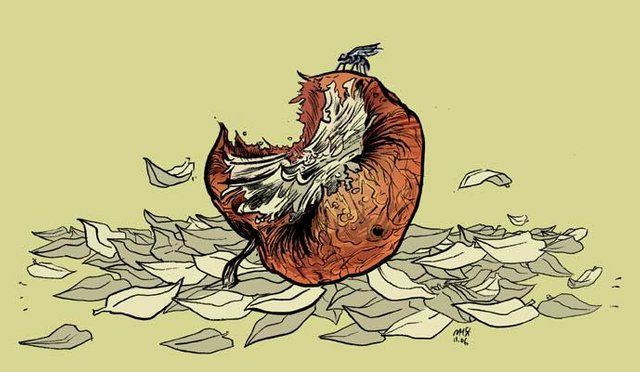The Soviet (Dis)Union
In this essay I argue that the Soviet Union cannot be considered a model for development as it was founded upon an ideology, namely communism, rather than an economic foundation, which subsequently led to its failure. I will initially address the structural flaws of the USSR such as the internal difficulties in the relay of accurate information to the central powers. Then I shall examine the difficulties this system posed upon the citizenry, who came second place to the industrial and military goals of the USSR. However, I will also address the very real industrial and military achievements, but ones that undermined the environment and the people, which stem from the ideology of communism. Finally, I will demonstrate that the USSR collapsed due to its ideological fixation over the might of the state, and the secondary considerations given to its economic strategy proved to be its undoing, furthering the argument as to why the USSR cannot be a model for development.

Ideologies exist as a collection of normative assumptions that stem from how people understand the world and society around them and speak to the ideals they wish to champion into the future. (Gerring, 1997, 961.) Communism stands as a clear example of one, it promises a society where people no longer are chained to the yoke of supply and demand but work collectively for the good of each other and society. To quote Marx: “To hunt in the morning, fish in the afternoon, rear cattle in the evening, criticise after dinner, just as I have a mind, without ever becoming hunter, fisherman, herdsman or critic.” (Marx & Engels, 1970, 53.) A lofty aim, but, the USSR, through the removal of private property and central planning, could never hope to achieve this level of freedom for the people without proper respect for market economics. Mass shortages, famines and incentivised underproduction for goods that were invalid, such as tractor parts produced only for the sake of meeting quota but were functionally useless. (Ericson, 1999, 18.) These cannot be signs of development, for all the contentious normative assumptions we fill that word with.
Initially, looking back upon the structure of the USSR, one can identify several inherent flaws such as the central authorities manipulating plans arbitrarily with a lack of data, formal rationing of resources to enforce maximum productivity and an absence of liquidity and adaption embedded within the system than precipitated its downfall. (Ericson, 1991, 19.) These rigid measures highlight the inherent biases to a market-oriented system, it could not sustainably develop without a healthy market and fell due to it due to the immense allocative pressures that the state took upon itself, all for the sake of its ideology. (Lavigne, 1999, 92.) Examining the foibles of the centrally planned system in closer detail highlights that the lofty goals of the communist ideology do not mesh well with the economic reality of the situation, let us examine the bureaucratic structure as a key example.

The Soviet chain of command was organised in an incredibly rigid hierarchical structure, the Council of Ministers issued quotas through central agencies, such as Goplan or Gossnab, which dealt with issuing detailed commands to the operational sectors, who were based in the factories or construction sites. (Ericson, 1991, 14.) The distance between these sectors and lack of vertical accountability forces the operational sectors, suffering the dual distortion of orders from above and hidden capabilities from below crippled any idea of efficiency and innovation within the system. In short, the system relied heavily on the stick and had no carrots whatsoever to offer the collective farmers or the factories to increase productivity or innovate. In fact, I will outline how the very disconnected system of production quotas from the central planning organisations acted as a motivator for underproduction as another clear example of how the USSR could not be a model for development, demonstrating the economically flawed yet ideologically congruent to the values communism upheld.
Underproduction was a strategy pursued by the operational sectors to maintain the illusion of exceeding production goals and securing favourable rents for the managers of factories and farms. Due to factors such as the disconnect of operational facilities from the central governing bodies such as Gosplan, the poor provision of resources due to austere ideals of maximining productivity from as little resources as possible and continued demands for increased rates of production, factories and farms were disincentivised to produce at full capacity. (Ericson, 1991, 18.)

Furthermore, due to the opposition of market values in its ideology, such as price setting or supply and demand dynamics, workers for example were paid the same bonus amount no matter how much they overproduced. Therefore, why would they expend themselves more for the same bonus, when they could claim incapability and then receive a bonus for ‘overproduction’, when they simply produced at the original quota yet were paid more for it. (Loeb & Magat, 1978, 174.) Despite this inefficiency, no other country in the world had militarised as fast as the USSR did, as it ‘became one of the greatest military powers in history in three decades.’ (Castells, 2010, 23.) This however was not without cost to society, as I will examine the negative externalities generated by the militarisation of the economy.
As previously mentioned, this problematic feature of the Soviet system was the incessant drive to increase the strength of the Soviet state to levels of spending which the economy could not even sustain, where Soviet expenditure on defence rose to 15 percent of GNP in the 1980’s, twice as much as Reagan’s defence allocation. (Castells, 2010, 22.) This bloated military cyst was a crippling burden for the Soviet citizenry and labour force, which acted as an extractive arm of the state for both industrial productions being shunted into the private area of the military and labourers being diverted from the already undersupplied collective farming system, which underpinned one of the clearest examples of the disconnect of communism from any basis in economic reality. The agricultural sector, whilst being bled of labour through the incessant demand for more industrial and military projects, was also facing extensive issues due to the very regressive nature of the collective farming system.
The collective farming system was yet a further illustration of how the communist ideology was disconnected from economic reality and practicality, as Stalin implemented this system to free and mobilise the peasants from the domineering yoke of the ‘kulak’, the peasantry who now owned land. (Alexopoulos, 2008, 99.) However, this led to the resulting mass murder and deportation of the kulaks and the subsequent destruction of what was once the ‘breadbasket of Europe’ based in Ukraine. (Swinnen et al. 2017, 39.) However, the continuous rotation of farmers from different plots of land ensured a culture of short termism as the predominant mindset of the farmers, incentivising over-fertilization that boosted yields now but damaged crop growth in the long run, resulting in catastrophic famines and a continued deficit of agriculture. (Volin, 1951, 469.) Furthermore, coupled with the reliance of the Soviet state upon the exportation of crops to fuel industry, food was scarce at best. Following from the lack of exportable crops due to their ideologically-backed agricultural policy, the USSR resorted to the exportation of their competitive advantages: oil, natural gas and metal ore.

I present as an alternative to communism the ideology of capitalism, one with hundreds of years of empirical data that has shown its success as a developmental model. Capitalism as an ideology works far better as a developmental model due to its incentivisation of innovation and efficiency. As argued by Professor Jason Brennan, communism asks us to take the moral high ground, to work for the sake of our neighbours, whereas capitalism appeals to our own sense of self-preservation and security and incentivises people to work for themselves and take advantage of gaps in the market. (Brennan, 2014, 5.) My criteria for a functional developmental model are focused around not simply figures of GDP or tonnes of steel produced, but of the freedoms the general populace can enjoy, as postulated by the renowned development theorist Amartya Sen, who remarks that the utility of wealth and its accumulation in capitalist ideology lies in which freedoms it helps us to achieve. (Sen, 1999, 15.) Capitalism is by no means perfect, it gives rise to vast inequalities and barriers to social mobility but contrasting between these two ideologies has put capitalism as the lesser of two evils.
Finally, we reach a conception of a state that promised its people so much, and yet in reality simply bolstered itself at the expense of its land and people, which it swore to uphold. One only must look at the plight of the Aral Sea to realise what truly an unaccountable state looks like, one that can dry up a whole sea simply to satisfy production quotas. (Micklin, 2007, 56.) The Marxist-Leninist ideology followed by the USSR stemmed from ideas that were created in the 19th Century, where Marx saw the poor as oppressed in the workhouses and could have never imagined the freedoms that capitalism would bring. (Marx & Engels, 1970, 73.) The USSR achieved a great deal in such a short period of time, it cannot be brushed aside as a complete failure. However, the USSR was like a rotting apple, with a strong militant and industrial red skin when in fact its social and environmental core was rotting away.

References:
Alexopoulos, G. (2008) Stalin and the Politics of Kinship: Practices of Collective Punishment, 1920s-1940s. (Comparative Studies in Society and History, 50(1), 91-117.)
Brennan, J. (2014) Deep Down, Everyone’s a Socialist…and Wrong. In: Why Not Capitalism? (New York: Routledge, 3-22.)
Castells, M. (2010) The End of Industrial Statism and the Collapse of the Soviet Union. In: End of Millennium. (New Jersey: Wiley-Blackwell. 1-37.)
Ericson, R, E. (1991) The Classical Soviet-Type Economy: Nature of the System and Implications for Reform. (Tennessee: The Journal of Economic Perspectives, 4(5), 11-27.)
Gerring, J. (1997) Ideology: A Definitional Analysis. (Political Research Quarterly, 50(4), 957-994.)
Lavigne, M. (1999) Chapter 6: The End of the System. (In: The Economics of Transition; From Socialist Economy to Market Economy, Basingstoke: Macmillan Press. 91-112.)
Loeb, M & Magat, W, A. (1978) Success Indicators in the Soviet Union: The Problem of Incentives and Efficient Allocations. (The American Economic Review, 68(1), 173-181.)
Marx, K. & Engels, F. (1970) Private Property and Communism. In: The German Ideology. (New York: International Publishers, 52-57.)
Micklin, P. (2007) The Aral Sea Disaster (Annual Review of Earth and Planetary Sciences, 35(1), 42-72.)
Sen, A. (1999) The Perspective of Freedom. In: Development as Freedom. (Oxford: Oxford University Press, 13-35.)
Swinnen, J., Burkitbayeva, S., Schierhorn, F., Prishchepov, A. V. & Müller, D. (2017) Production potential in the “bread baskets” of Eastern Europe and Central Asia (Global Food Security 14(1), 38-53.)
Volin, L. (1951) Soviet Agricultural Collectivism in Peace and War. (The American Economic Review, 41(2), 465-474.)